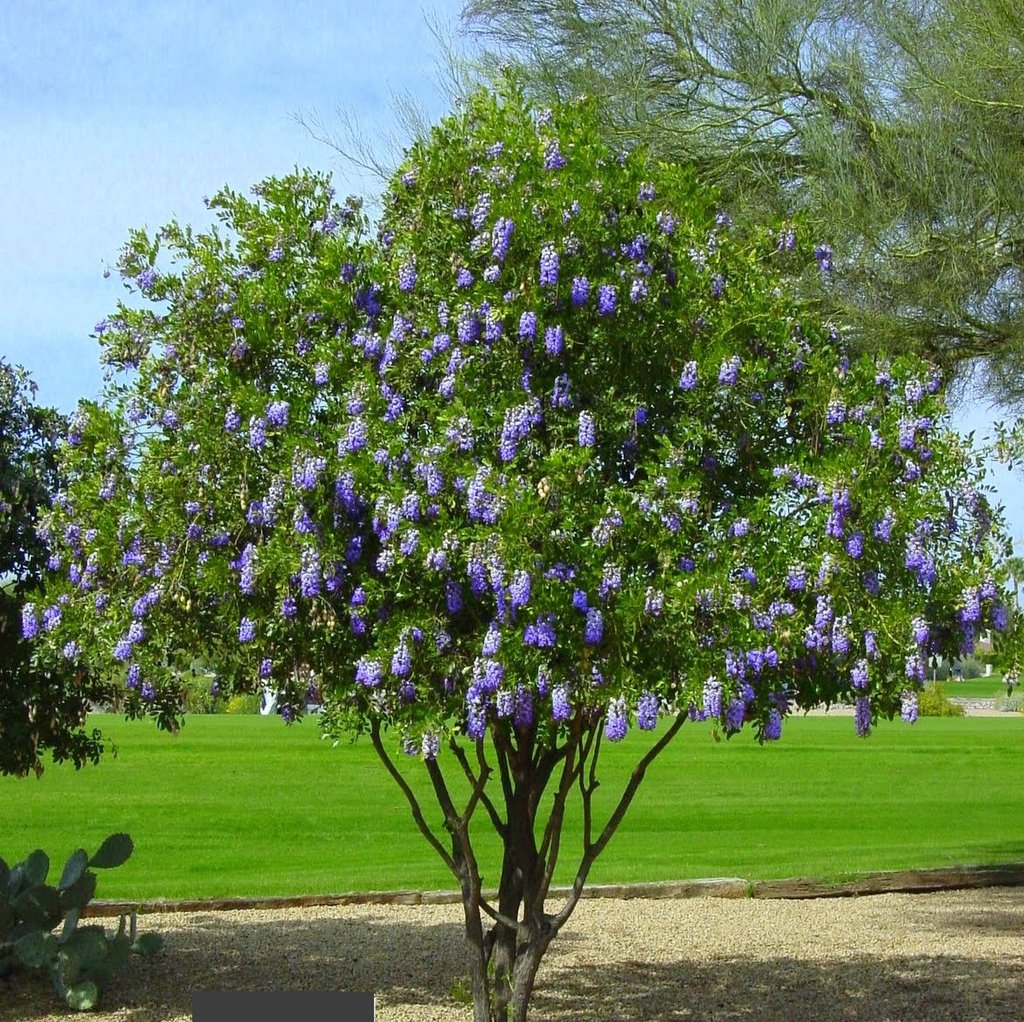
25 May Texas Mountain Laurel
From: Bandera, TX
Region: Southwest
Topic: General Botany, Propagation, Trees
Title: Propagating a white cultivar of Texas Mountain Laurel (Sophora secundiflora
Answered by: Nan Hampton
QUESTION:
I am trying to propagate a white cultivar of the Texas Mountain Laurel. I plan to use bee sticks and pollinate the plant. Are the plants self-fruiting or do I need to find another white mountain laurel somewhere to try and do this? What would be a good item to cover the blooms with to avoid promiscuity?
ANSWER:
First, let’s talk about the breeding system of Sophora secundiflora (Texas mountain laurel). They have perfect flowers with both male and female components within each individual flower. The flowers of Texas mountain laurel are typical “pea” flowers with the stigma (female part) and the stamens (male parts) enclosed within the keel of the flower. This would seem to be an ideal setup for self-fertilization inside the unopened keel of the flower. However, the very fragrant flowers are enthusiastically visited by bees and other insects that are able to push inside the keel to obtain the nectar and, in the process, collect pollen. It is VERY unlikely that the flowers self-fertilize in this way. However, we don’t have any information as to whether the flowers are self-compatible or not. In other words, if a bee visited one flower on the tree and then brought the pollen from that flower to a different flower on the tree, would the pollination result in fruit? It is certainly worth trying to pollinate the flowers with pollen from other flowers on the tree.
If you have access to another Texas mountain laurel with white flowers, it would be good to try using pollen from that tree, too, because, even if the flowers on the same tree are self-compatible, the introduction of genetic diversity is likely to increase the amount of fruit set over those of the self-pollinated flowers. That said, you need to realize that white cultivars can be from mutations of different genes and the combination of the two might result in the two compensating for the mutation that the other has and not resulting in white flowers at all.
An article on Wikipedia discusses pollination bags and lists bags made of different materials and their characteristics. There is also a set of criteria for a good pollination bag. Among those criteria are the pollination bag:
- be made of material strong enough to withstand abrasion from wind, rain, birds, etc.
- be porous enough that air and moisture is able to pass through, but not so porous that pollen grains can enter
- allow the penetration of sunlight so that photosynthesis can continue to occur to tissues within the bag
The main criteria for a good pollination bag should be that ambient conditions are maintained within the bag while preventing the entrance of pollinators or wind-blown pollen.
Here are some suppliers of pollination bags that I found on the Internet:
- Delnet® Pollination™ Bags
- Carolina Biological Supply
- PBS International
You can find more suppliers by searching the Internet for “pollination bags”.
The pollination bag that you use will be tied around the stem of the flower cluster as soon as the flower buds form to prevent insect pollinators from entering the flowers. In order to prevent injuring the stem, you can first wrap a cotton ball around the stem before you tie the bag, with a string or twist tie, securely around the stem.
Finally, you could make your own bee sticks, buy pollination wands or use a small paint brush like Gregor Mendel used in his famous pea plant crosses.

